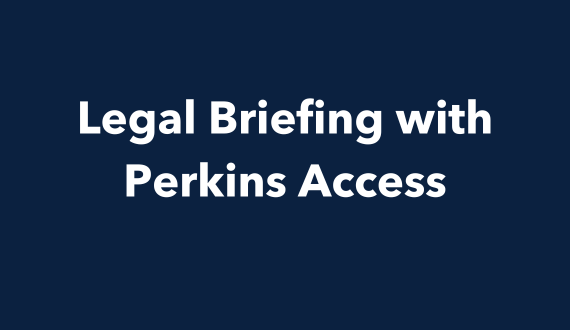Everything you need to know about VPATs
Share

You may be here because someone asked about your organization’s VPAT — and you then asked yourself, “What is a VPAT? Do I need a VPAT? How do I get a VPAT?”
The good news is, you’ve come to the right place. Here, we break down everything you need to know about VPATs — including why your organization may need one.
What is a VPAT?
A Voluntary Product Accessibility Template (VPAT) is a document that explains the accessibility of a product or service, such as your platform or software.
VPATs are an easy way for procurement agents to evaluate accessibility before committing to a contract or purchase. Vendors typically fill out and maintain their own VPATs, or they hire accessibility experts (such as Perkins Access) to complete them.
A VPAT can also be called an Accessibility Conformance Report (ACR).
Why do I need a VPAT?
VPATs are used by buyers to determine how accessible a product is and where any potential deficiencies are — and some buyers require them before they’ll make a purchase.
If you’re a vendor working with organizations who are asking how accessible your products are, a VPAT is one of the best ways you can communicate this information.
You can use a VPAT to demonstrate your product or service’s accessibility relative to the Web Content Accessibility Guidelines, the Section 508 Standards (the accessibility standard for the U.S federal government), or EN 301 549 (the European Union’s accessibility requirements).
And, if the Federal government is one of your potential customers, a VPAT will meet their solicitation requirements to ensure procured products meet Section 508 accessibility requirements.
How do I prepare for a VPAT?
If a VPAT is the first time you’re hearing about accessibility, the best place to begin is with an accessibility audit. Starting with an audit allows you to work towards a VPAT in the most efficient way and results in a VPAT as part of the process. An audit will identify barriers and help prioritize fixing those barriers, so you can accurately demonstrate your product or service’s accessibility on your VPAT.
How do I get a VPAT?
We recommend you have your VPAT completed by an outside organization. Why? Your own developers may be so familiar with your product that they may have unconscious bias about how it works for users with disabilities.
A VPAT that’s completed by someone intimately familiar with the complexities of Web Content Accessibility Guidelines (WCAG) and other accessibility requirements is going to be objective and therefore more accurate. The Perkins Access team is highly qualified to complete VPATs for you.
I have a VPAT. Now what?
Make your VPAT publicly available, so potential customers and other stakeholders can easily find information about your product’s accessibility.
However, if you have a VPAT that’s been around for a while, it may be time for an update. An updated VPAT not only shows your commitment, it also shows that you are always improving your product’s accessibility.
Having a VPAT is just one component of accessibility. If your customers have accessibility as a purchasing requirement, which is increasingly becoming the standard (see the $10 billion opportunity), it is time to think about a more comprehensive strategy. Learn how to create an accessibility plan for your organization, so you can build accessibility into the way you do business. By being strategic, you can create impact not only for your customers, but also for your employees, which means you’ll become more inclusive overall.
How (and when) do I update a VPAT for WCAG 2.2?
WCAG 2.2 is the latest version of the Web Content Accessibility Guidelines, published by the World Wide Web Consortium (W3C) on October 5, 2023. WCAG 2.2 does not replace 2.1; it simply expands upon it by adding nine new success criteria and removing one existing success criterion. These new success criteria improve accessibility for people with visual, physical, and cognitive disabilities.
If you already have a VPAT that conforms to WCAG 2.1, you may want to update it to reflect the changes in WCAG 2.2. This will show your potential customers and other stakeholders that you know the latest accessibility standards and are working towards meeting them. Updating your VPAT for WCAG 2.2 may require some additional work, but it will also demonstrate your commitment to accessibility and your willingness to improve your product or service for all users. Learn more about WCAG 2.2 and how you can plan for the update.
Need help?
If you need help with a VPAT and you’re interested in learning about the best starting point, talk to an expert today. We’ll walk you through our process, which usually starts with an audit and remediation, so you’re providing potential clients with the most accurate and up-to-date report possible.




